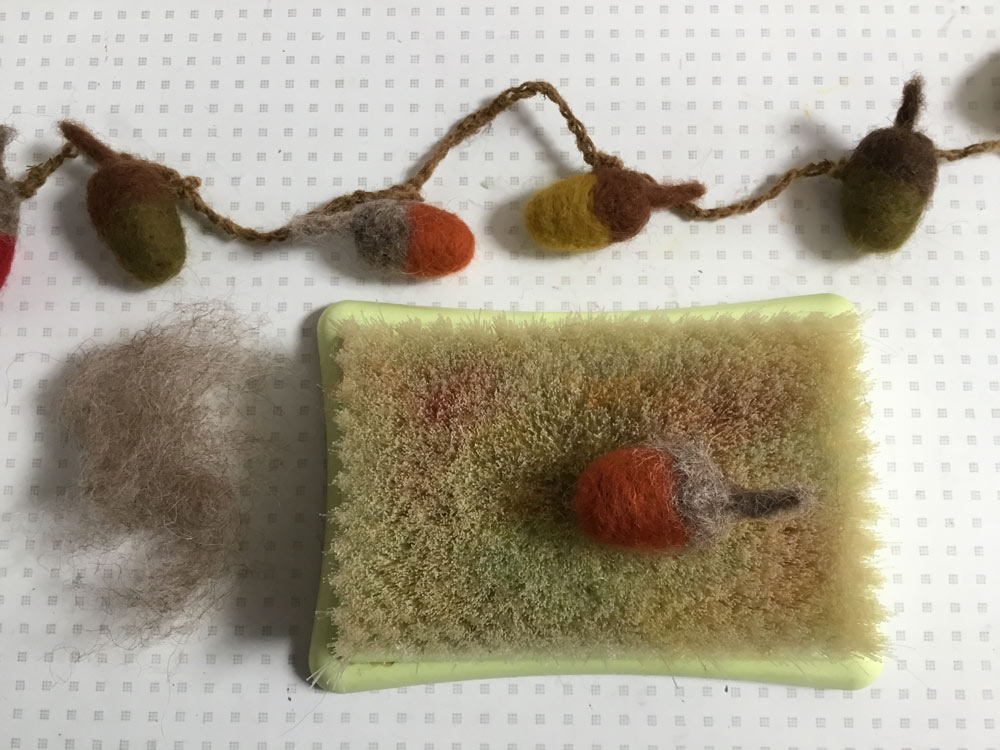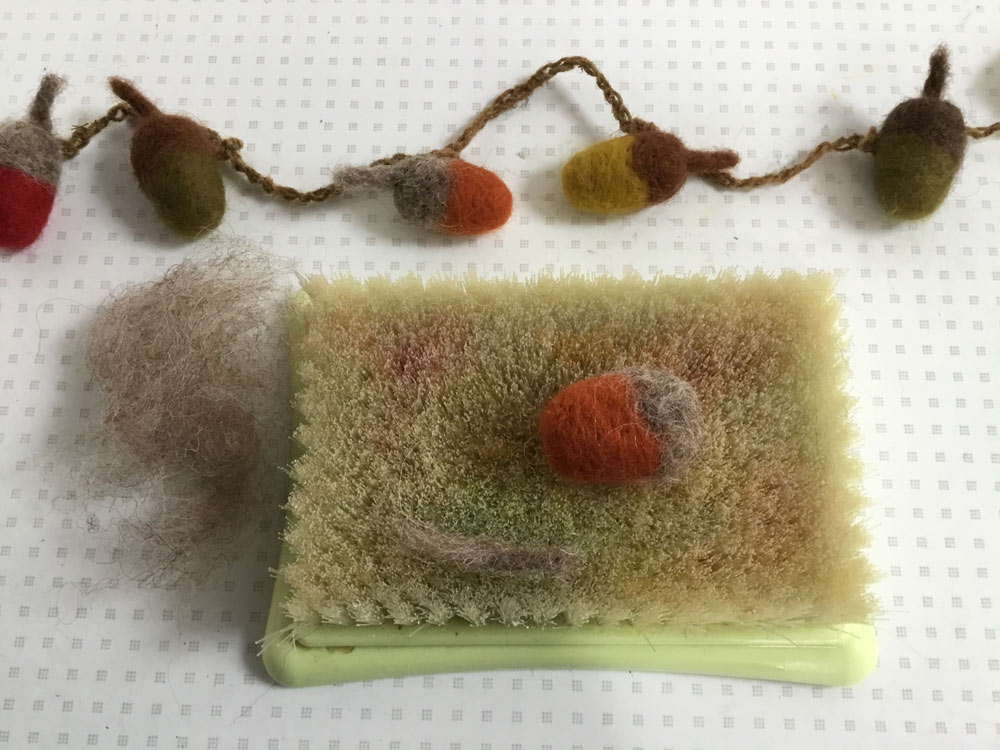Acorn Garland
Autumn has arrived and the days have become cooler. The light becomes more subtle and nature’s rich autumnal colours appear. I have seen more squirrels around this year, leaping along the wall which runs along the back gardens of row of terrace houses where I live. My thoughts turn to acorns and I begin to create them from beautiful shades of browns, reds, pale yellow and moss green wool. I seek to make a garland drawn by the lovely autumn colours.
When I run needle felting workshops, I often say to participants that I don’t use merino wool except for details. Merino is ok for detail I say, to add a stripe, a spot, a mouth, a beak, but because it’s so fine a wool it would take forever to make a basic shape. But, when making acorns l make an exception because merino is available in such beautiful colours and the fine wool produces a smooth surface for the nut. I contrast the smooth merino wool by making the hat of the nut (called a cupule) and the stalk I with Bergschaf wool, it’s coarser and hairy and l think the two wools compliment each other.
How to make an Acorn Garland
1. A gram of merino will roughly make two acorn nuts about 4 cm long 7cm in circumference. The cupule and stalk requires small amounts of Bergschaf.
2. Begin by making a nut using a small amount of merino wool, build it up by wrapping additional small amounts of wool around the shape a bit at a time and needle felting each layer in until you are happy with the size. The ends of the nut should be a little smaller than the middle. Make sure you continuously move your nut shape as you are needle felting to produce the round form. See photos.
3. To add the cupule, place a very small amount of Bergschaf wool on the head of the nut and gently needle felt so that the wool attaches snuggly and with an uneven wavy edge to create a natural effect. Make a small stalk with one end unfelted so that it is easy to attach to the cupule. See photos.
4. L crocheted a single row of hemp string chains on to which I attached the acorns to make the garland. I placed the acorns at equal intervals along the string, leaving a length of chain at each end so that the garland can be easily hung. I then used a crewel needle threaded with a small length of hemp cotton string which I threaded through the back of each acorn passing the needle through the hemp chain and tying the two ends of the string so that the acorn stayed in place.
5. Hemp cotton yarn is good to use because it does not stretch with the weight of the acorns. I buy this from sorazora.com, they have lots of lovely coloured yarn.
A handmade acorn garland will make a beautiful addition to a room bringing brightness well into the winter.
I am always happy to give advice on needle felting, feel free to email me
lynnedewberry@yahoo.co.uk
Lynne Dewberry
October 2020






